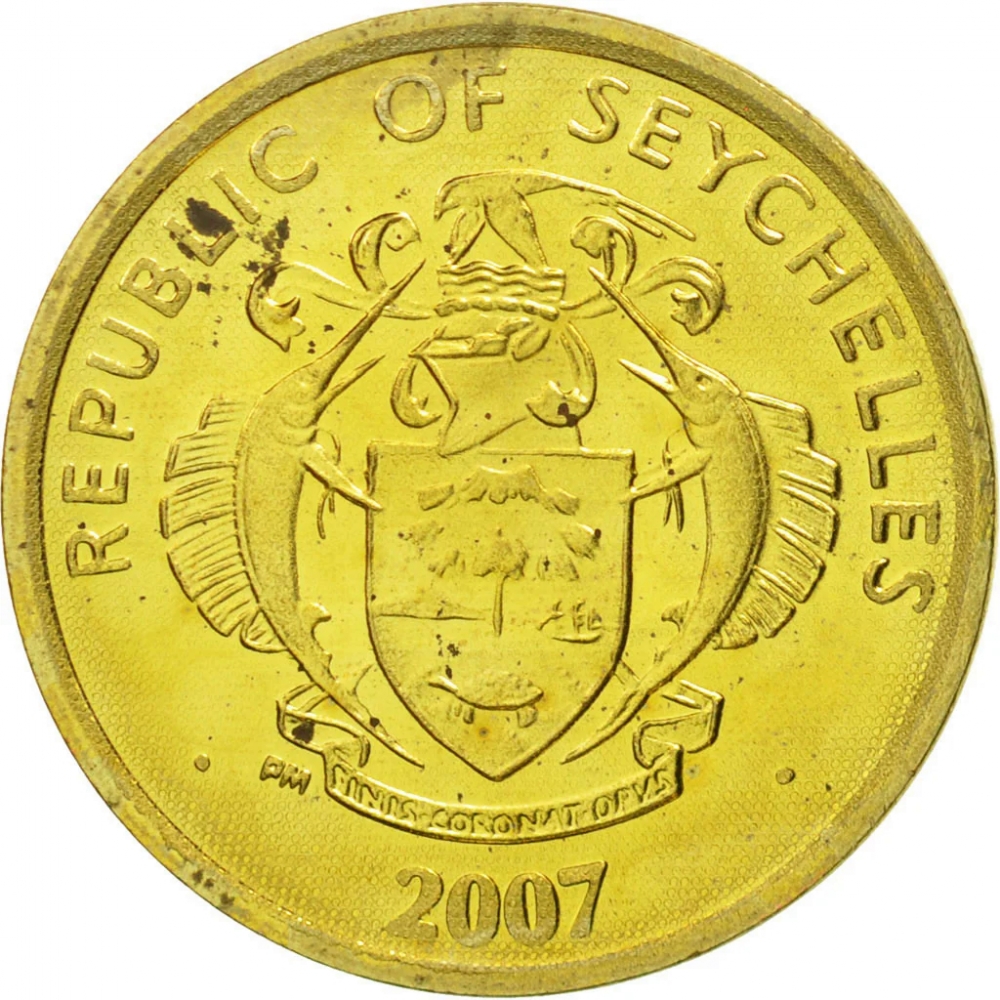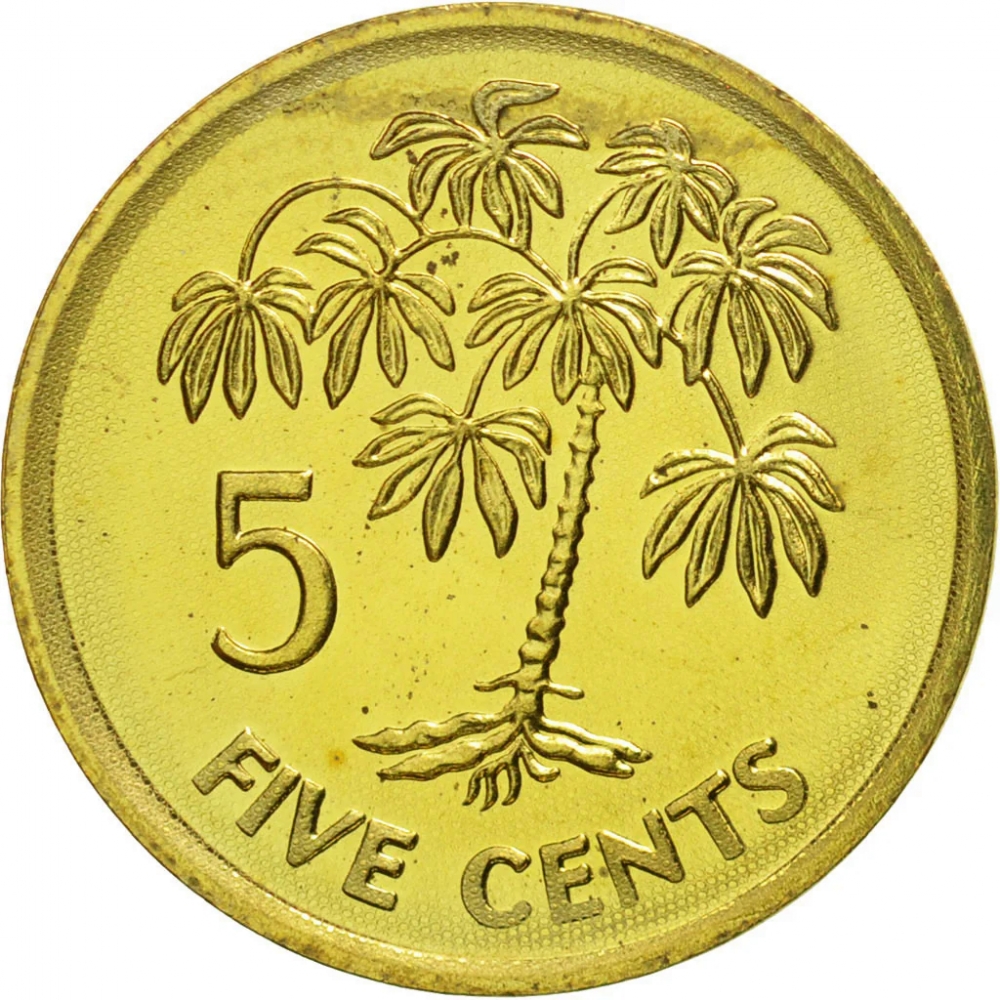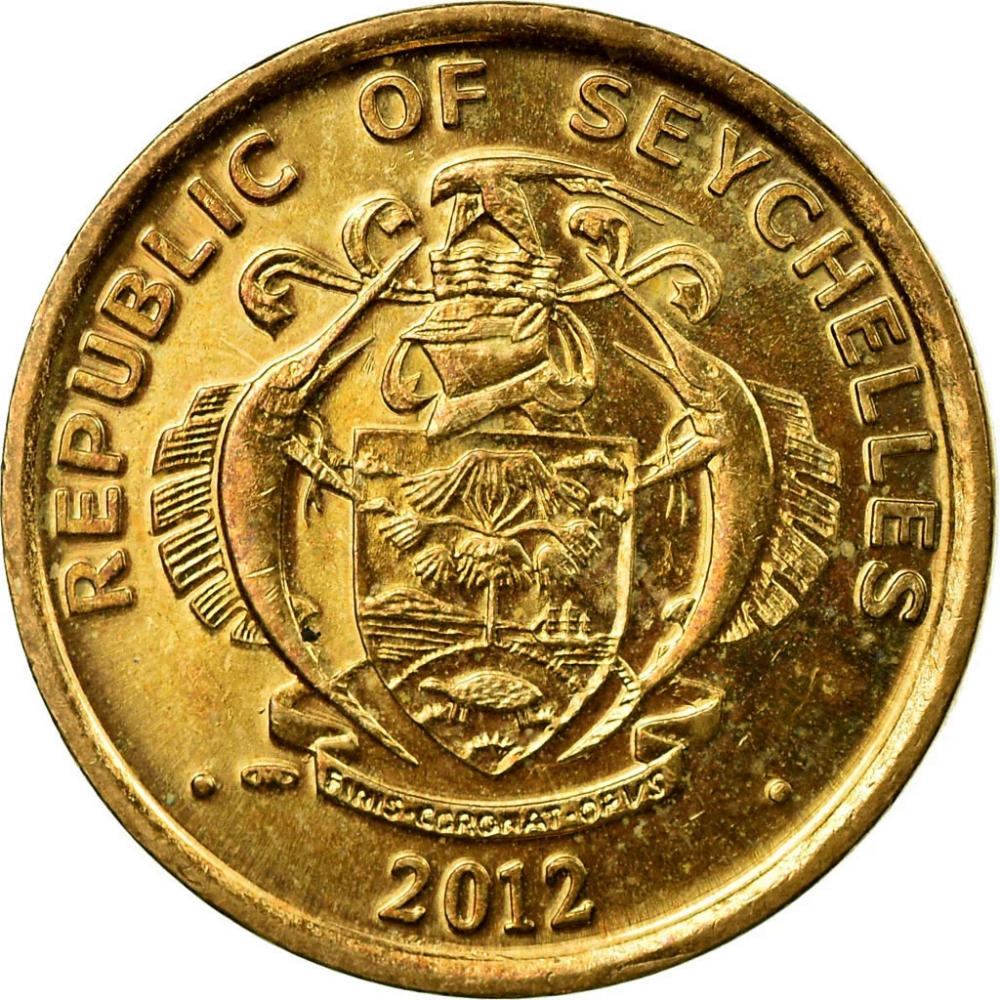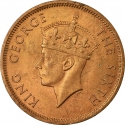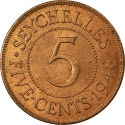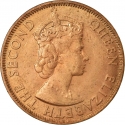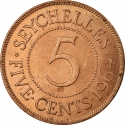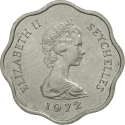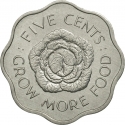You are about to finish your registration. Please check your mailbox (including spam folder). There should be a letter with a confirmation link. Check setting to make sure that your e-mail address is correct.
Send letter againDescription
Seychelles is an archipelagic island country in the Indian Ocean at the eastern edge of the Somali Sea. The country consists of 115 islands. Its capital and largest city, Victoria, lies 1,500 kilometres (932 mi) east of mainland Africa.
Seychelles was uninhabited prior to being encountered by Europeans in the 16th century. It faced competing French and British interests until coming under full British control in the late 18th century. Since proclaiming independence from the United Kingdom in 1976, Seychelles has developed from a largely agricultural society to a market-based diversified economy, characterized by rapidly rising service, public sector, and tourism activities.
Obverse

|
Depicts the coat of arms of Seychelles, country name above, date below. Mint mark below left. REPUBLIC OF SEYCHELLES |
|---|---|
Reverse

|
Depicts a manioc plant with digit value left surrounded by value in English letters below. 5 |
| Edge |
5 Cents
KM# 47a
Characteristics
| Material | Brass Plated Steel |
| Weight | 1.97 g |
| Diameter | 17.97 mm |
| Thickness | - |
| Shape |
|
| Alignment | Medal |
| Mints |
Pobjoy Mint (PM) South African Mint (SA Mint)
|
Related coins
Food and Agriculture Organization (FAO)
